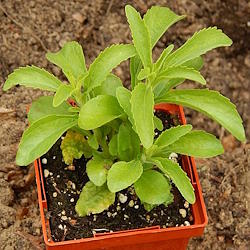all about
the stevia plant
No doubt you're familiar with stevia ... the "fake sugar" with the weird after-taste. (Yuck!)
Allow me to introduce you to the stevia plant ... a sweet-leaf herb you'll munch like candy, straight from your garden. (Yum!)
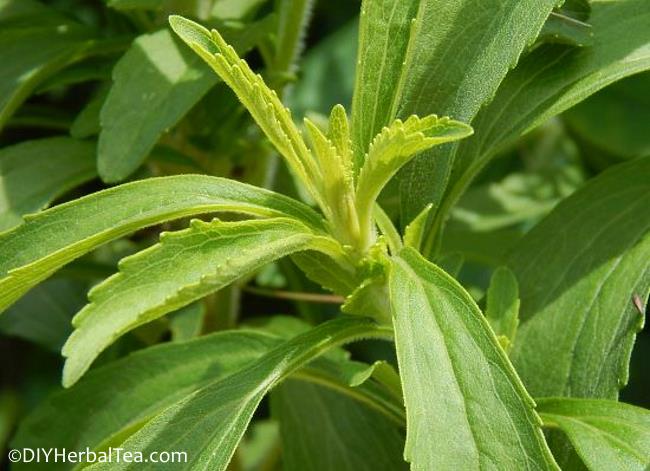 Stevia in Full Growth
Stevia in Full GrowthStevia Basics
Botanical Name: Stevia rebaudiana
Hardy To: 30°F / -1°C (grow as a tender perennial in warm climates or an annual elsewhere)
Sun: Full sun
Soil: Light, well-draining; slightly acidic preferred
Start From: Nursery plants
Space Required: 18 in. / 46 cm
Grow in Containers: Yes, great for patios or balconies
Parts Used for Tea: Leaves
Scent/Flavor: No discernible scent; sugary sweet flavor
Benefits of Stevia
Stevia doesn’t have a long list of herbal “benefits.” Its real claim to fame is simple: it’s naturally sweet, with no calories and no sugar crash.
For most people who are trying to cut back on sugar or artificial sweeteners, stevia leaves make a smart substitute.
That’s pretty much the whole story. It's just a sweet leaf that does what you wish sugar would.
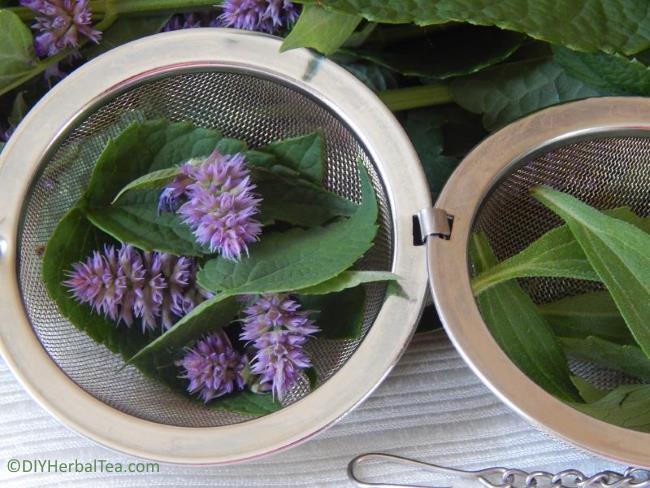 Stevia leaves and anise hyssop flowers — a naturally sweet combo for herbal tea
Stevia leaves and anise hyssop flowers — a naturally sweet combo for herbal teastevia Allergies & Side Effects
Even natural herbs like stevia leaf can cause allergic reactions or interact with medications, supplements, and over-the-counter remedies.
To stay on the safe side, always talk with your trusted healthcare provider before using stevia.
For medically reviewed details about potential side effects and interactions, see WebMD: Stevia – Uses, Side Effects, and More
try before you grow
Want to taste the leaves of a stevia plant before you commit to growing your own?
You can find dried stevia leaves on Amazon — a convenient way to sample the flavor before planting.
Just keep in mind that dried herbs from a store can’t match the clean, fresh sweetness of leaves you’ve dried yourself right after harvest.
More about stevia ...
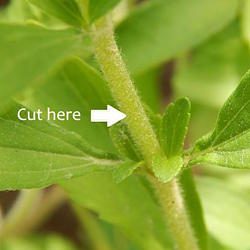
Harvesting & Storing Stevia
(Coming Soon)
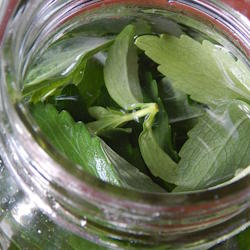
Using Stevia for Herbal Tea
(Coming Soon)

